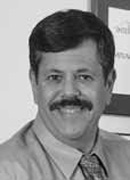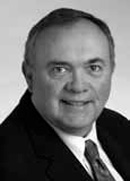Question: How do you decide on extraction sequencing and immediate vs delayed implant placement for failed central incisors?
Elizabeth M. Bakeman, DDS; Gregori M. Kurtzman, DDS, MAGD; Bruce W. Small, DMD, MAGD

There are indications for both approaches. Maintaining or achieving ideal peri-implant tissue architecture remains the key foundational element in achieving an optimal result. Treatment approaches should focus on preserving existing tissue architecture as well as reestablishing desired contours in instances where hard and soft tissue architecture is less favorable. Approaches that aim to preserve tissue architecture and prevent tissue collapse include atraumatic extraction, immediate implant placement, flapless surgical approaches, and immediate provisionalization. Grafting thin gingival biotypes, which are prone to recession, at the time of implant placement, are beneficial in preserving existing architecture. Injectable fillers show promise in helping to further preserve the contours of the interdental papillae during the transitional phases of reconstruction. Clinicians must be mindful of implant size and position to ensure that neither encroaches on the buccal or interproximal osseous architecture because encroachment can lead to bone loss and subsequent soft tissue loss. Exaggerated prosthetic contours must also be guarded against, as these too can negatively impact tissue contours.
When facing the loss of two or more adjacent teeth, there are increased challenges in preserving osseous and tissue architecture. It is suggested that clinicians maintain greater control over preserving existing soft tissue architecture by utilizing an alternative approach to extraction and implant placement that avoids simultaneous extraction of adjacent teeth; tooth extraction, implant placement, provisionalization, and healing are made possible on one tooth before proceeding with similar procedures on an adjacent tooth. Currently, the alternative approach provides the sequencing of choice when presented with multiple, adjacent failing teeth.
When preoperative gingival or osseous architecture is suboptimal, it is important to use treatment approaches that first strive to reestablish ideal tissue contours. These include orthodontic extrusion and hard and soft tissue grafting. In situations requiring osseous augmentation, delayed implant placement is preferable; immediate implant placement only serves to complicate matters.
The bottom line is that collapsed tissue architecture remains challenging to recreate and often results in less than predictable outcomes. Ultimately, we must strive to preserve tissue architecture with proven techniques and employ augmentation procedures as required. Proper diagnosis and treatment planning, as well as meticulous execution of treatment protocols, remain paramount when approaching the replacement of failing teeth with implant-supported restorations.

Immediate versus delayed placement will be dictated by why the teeth failed and how much facial osseous support is present. In the absence of frank infection or the presence of failing endodontically treated teeth, placement of the fixtures at the time of extraction preserves the crestal bone and allows the practitioner to avoid trying to recapture lost hard and soft tissue from the resorption process of healing.
When periodontal issues have led to loss of the facial plate, grafting becomes necessary to reconstruct the site before an implant can be placed. Allowing the socket osseous graft and soft tissue graft to heal together prior to implant placement gives the surgeon and restorative dentist a better idea of what is present that will support the soft tissue when the restoration is placed. Placement of connective tissue grafts in these situations at a later date makes the esthetics less predictable as we have to “guess” where the gingival margin will be after healing.
After extraction, even when socket grafting is employed, the lack of support for the papilla frequently leads to a flattening of the interproximal anatomy. This becomes more problematic when adjacent teeth are being extracted. Soft tissue architecture, specifically the papilla, is most predictably maintained when implants are placed at the time of extraction and provisionalization can be achieved at the time of surgery. Papilla that is lost during site healing may be difficult or impossible to recreate, compromising the esthetic result.
Papilla requires not only the correct distance between the crestal bone and contact between the restorations but needs a 3-D volume to be predictably maintained. With this in mind we need to decide when both centrals are slated for extraction, do we place an implant into both extraction sites or a single implant with a cantilever pontic. If the distance between the fixtures will allow greater then 3 mm of bone, then we can place two fixtures and replicate natural soft tissue architecture. But when this distance is less than 3 mm, it may be wiser to use a single fixture with a cantilever pontic to allow maintenance of a papilla at the midline.

The first decision should be to make certain that the teeth are not salvageable. A determination should be made as to the etiologic factors that contributed to the failing tooth or teeth. Occlusion, periodontal health, home care, caries index, and crown-to-root root ratio should be evaluated before making any decisions. If the teeth can be saved, that should be the first choice. Placing a post-and-core or pin build-up and crowns should be considered. Sometimes orthodontic extrusion can help in achieving a better crown-to-root ratio and exposing more clinical tooth structure. Periodontal crown lengthening is another possible consideration that should be considered.
If extractions are indicated, the clinician who will be placing the implants should do them. In the absence of infection, sometimes the implants can be placed immediately after the extractions. An impression should be taken before the extractions and a flipper or bleaching stent should be constructed to replace the missing teeth after extraction.
Controversy continues about whether or not to place an implant immediately after extractions, but it should be the implant placer who makes that decision. He/she will base the decision on a number of factors including: the presence of infection, the patient’s home care and smoking habits, as well as his/her overall medical history. It should be noted that placing two implants in site Nos. 8 and 9 may cause problems with the gingival papilla and may create a “black hole.”
| About the Authors | |
| Elizabeth M. Bakeman, DDS Gregori M. Kurtzman, DDS, MAGD Bruce W. Small, DMD, MAGD |



